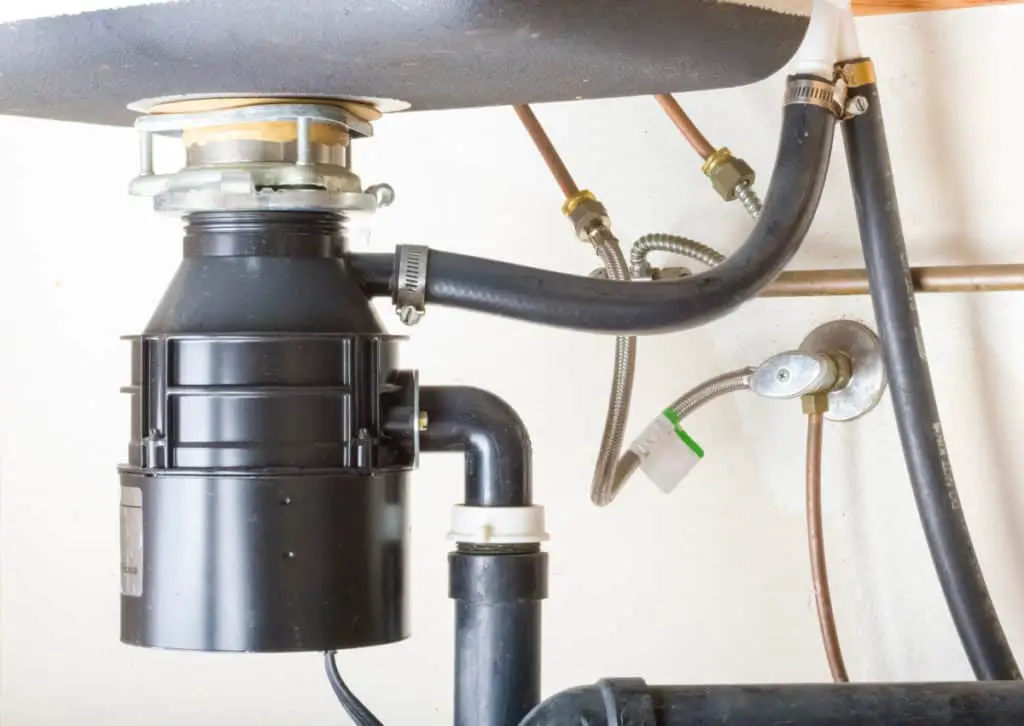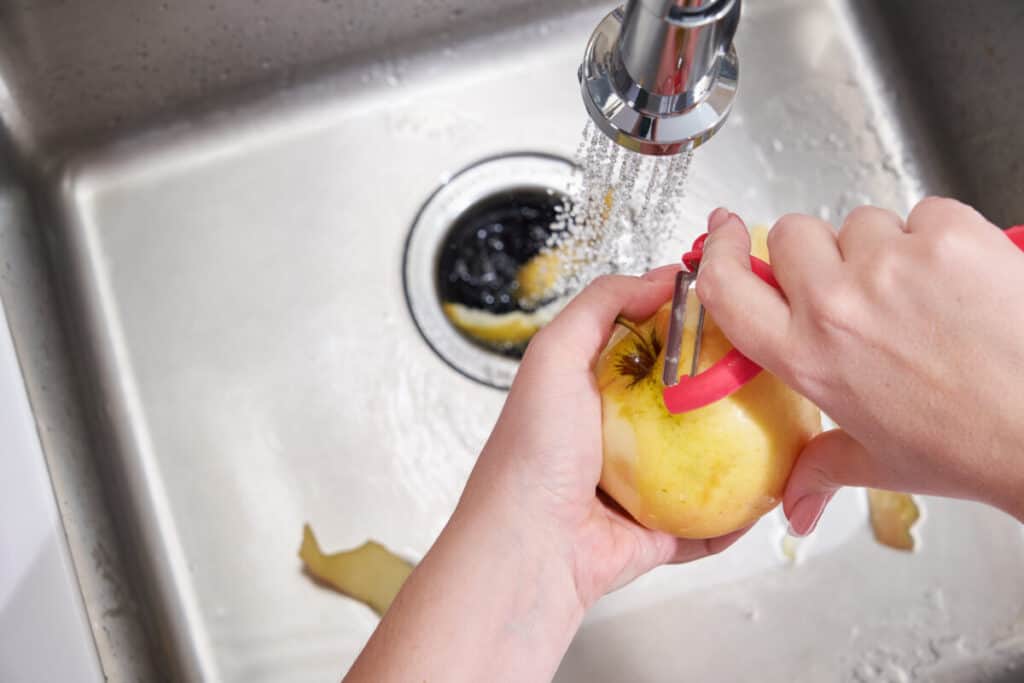Garbage disposals are broadly classified into two different categories: batch and continuous feed garbage disposals. Each of them has advantages and drawbacks, but you might be wondering which one you should choose and why.
The main difference between a batch and continuous feed disposal is their ability to take on waste while powered on. While using a batch feed disposal, one cannot insert any more waste until grinding is complete, but the continuous disposal allows the user to insert waste while it’s still running.
Understanding how these garbage disposals differ from one another can help you in figuring out the right type you must install. Thus, here I provide a complete overview of batch feed and continuous feed disposer to help you make an informed decision.

Batch Feed Garbage Disposal
A batch feed type garbage disposal, as the name implies, is a disposal unit that processes food wastes in batches.
How a batch feed garbage disposals work:
For batch feed disposals, the food wastes are processed in 3 to 5-cup batches. The first step is to fill the chamber with food scraps and when it’s full, a plug or stopper is placed on the tank or the mouth of the disposal unit. Then the stopper has to be twisted and pushed down to switch on the unit. After grinding is done, the stopper is lifted and the disposer stops. In case, you have more waste to grind, you have to repeat the cycle.
Pros of Batch Feed Garbage Disposal
- Safety: The disposer operates only when the stopper is placed. This makes it a safe appliance in the following scenarios:
- Children will not be able to put their fingers in when the disposer is running, because the stopper acts as a barrier.
- There is no chance of utensils dropping into the unit while grinding, which prevents damage to the turntable components and other parts.
- Low noise: Since the stopper covers the mouth of the disposal unit, it reduces unwanted noise produced while grinding and offers quiet operations.
Cons of Batch Feed Garbage Disposal
- Time-consuming: You have to dispose of food wastes in batches, this means the more waste you have, the more time it will take to complete. This can turn out to be a tedious process, especially for those with large families.
- Large size: The size of batch feed garbage disposers is usually larger when compared to continuous feed disposers. So this may not be ideal if your under-sink space is small.
- Inconvenience: If you lose the stopper then you won’t be able to operate the unit till you get a replacement, which can cost anywhere from $20 to $30.
Continuous Feed Disposer
A continuous feed-type garbage disposal unit is one where you can add food wastes even while it is running. So you can drop the scraps ‘continuously’ without having to wait for a batch to finish grinding.
How does it work?
Just turn on the switch, and the grinding will start to do its wonders. When you are done, switch it off and you are good to go!
Pros of Continuous Feed Disposer

- Speed: The speed of the continuous disposer is a major pro that makes it so popular. Only turn on the machine and leave the rest to it. Furthermore, many advanced models are equipped with top-end grinding technologies that are capable of chopping down tough items (small bones), and many other items which you shouldn’t put down normal disposal.
- Efficient: You can easily toss various items into a continuous feed type disposal while doing your usual chores. This multi-tasking saves a lot of time and effort than you would while using a batch feed type disposal unit.
- Affordable: Continuous-type disposers are relatively cheaper compared to their counterparts. Plus, they are lightweight, compact, and available in different sizes too. All you have to do is find the right size of disposal.
Cons of Continuous Feed Disposer
- Lack of safety: For these types of disposals the drain hole is not covered while grinding wastes and this leads to safety concerns. You might drop down foreign objects that would damage the disposer or can accidentally hurt your fingers if you are careless. Necessary precautions and proper operation is essential when you use the appliance.
- Food splashes back: The open mouth even triggers food to come out if it has been blocked by too much waste. A splash guard is often used to overcome this issue.
What Type of Disposal Wrench Do I Need?
There may be times that you get waste stuck on the grinding components of your garbage disposal, so it’s important to have a disposal wrench that works with your batch or continuous feed unit. Fortunately, most garbage disposals will come with a disposal wrench that works well with the product.
If you have misplaced your disposal wrench, you may also use an Allen wrench that is 1/4″ thick. In most cases, this size of a wrench will fit in any type of garbage disposal. If not, you will need to find out which size wrench works with your garbage disposal. You may call the product manufacturer to receive a replacement disposal wrench. You can also opt for these highly rated garbage disposal wrenches:
- Grainger Approved Garbage Disposal Wrench
- Waste King Garbage Disposer Unjamming Wrench
- InSinkErator WRN-00 Jam-Buster Wrench
Whether you have a continuous or batch feed garbage disposal, you can use any of the wrenches mentioned above to help unclog your disposal.
Final Verdict: Batch Feed Vs. Continuous Feed – Which one to buy?
As written above, both batch feed and continuous feed garbage disposals have many pros and cons. But continuous feed type disposals are far more popular than batch feed. That doesn’t mean you shouldn’t opt for a batch feed type disposal.
Here is a highlight of their differences:
- Popularity: In terms of popularity, the continuous feed has always been on the top of the list. This is primarily due to its ease of use, versatile design, and advanced features.
- More variants: Continuous feed types are available in many models and price ranges owing to their popularity whereas batch feed models are very few in number.
- Usability: Though both are meant for disposing of food wastes when it comes to batch feed the process turns out to be a bit complex. You have to fill the chamber, place the stopper, wait for it to grind, and then repeat the cycle.
- Perks: Though batch feed units lose their points due to lack of convenience, they come with added safety which is not available in continuous feed type disposals.
- Cost: As stated, continuous feed is an affordable option than batch feed types which is the reason why it is preferred by most households.
Whether you should get a continuous or batch feed garbage disposal is decided by the requirements of your home. At the end of the day, what matters is not the price tag or the features, but whether you got the right disposal for your needs.
Related Topics:
If you like the article above, here are some other similar articles you should check out!
Best Batch Feed Garbage Disposals
